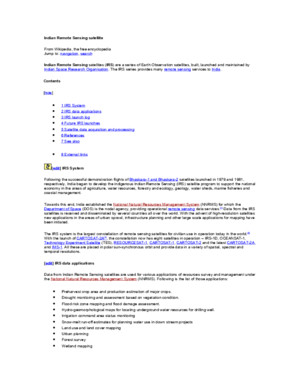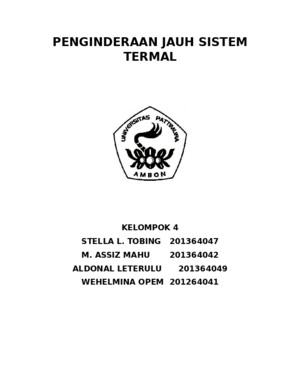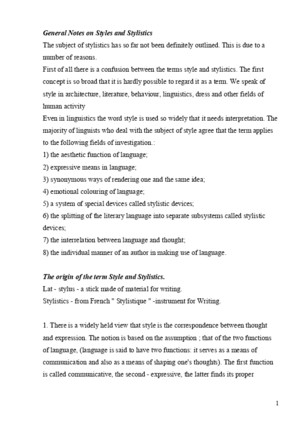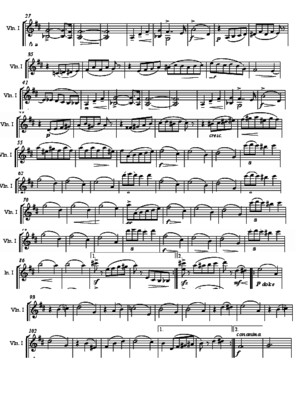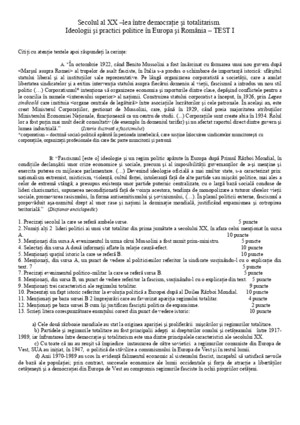Indian Remote Sensing Satellite
There is document - Indian Remote Sensing Satellite available here for reading and downloading. Use the download button below or simple online reader.
The file extension - PDF and ranks to the Documents category.
Tags
Related
Comments
Log in to leave a message!
Description
Download Indian Remote Sensing Satellite
Transcripts
Indian Remote Sensing satellite From Wikipedia, the free encyclopedia Jump to: navigation, search Indian Remote Sensing satellites (IRS) are a series of Earth Observation satellites, built, launched and maintained by Indian Space Research Organisation The IRS series provides many remote sensing services to India Contents [hide] 1 IRS System 2 IRS data applications 3 IRS launch log 4 Future IRS launches 5 Satellite data acquisition and processing 6 References 7 See also 8 External links [edit] IRS System Following the successful demonstration flights of Bhaskara-1 and Bhaskara-2 satellites launched in 1979 and 1981, respectively, India began to develop the indigenous Indian Remote Sensing (IRS) satellite program to support the national economy in the areas of agriculture, water resources, forestry and ecology, geology, water sheds, marine fisheries and coastal management Towards this end, India established the National Natural Resources Management System (NNRMS) for which the Department of Space (DOS) is the nodal agency, providing operational remote sensing data services[1] Data from the IRS satellites is received and disseminated by several countries all over the world With the advent of high-resolution satellites new applications in the areas of urban sprawl, infrastructure planning and other large scale applications for mapping have been initiated The IRS system is the largest constellation of remote sensing satellites for civilian use in operation today in the world[2] With the launch of CARTOSAT-2A[3], the constellation now has eight satellites in operation – IRS-1D, OCEANSAT-1, Technology Experiment Satellite (TES), RESOURCESAT-1, CARTOSAT-1, CARTOSAT-2 and the latest CARTOSAT-2A and IMS-1 All these are placed in polar sun-synchronous orbit and provide data in a variety of spatial, spectral and temporal resolutions [edit] IRS data applications Data from Indian Remote Sensing satellites are used for various applications of resources survey and management under the National Natural Resources Management System (NNRMS) Following is the list of those applications: Preharvest crop area and production estimation of major crops Drought monitoring and assessment based on vegetation condition Flood risk zone mapping and flood damage assessment Hydro-geomorphological maps for locating underground water resources for drilling well Irrigation command area status monitoring Snow-melt run-off estimates for planning water use in down stream projects Land use and land cover mapping Urban planning Forest survey Wetland mapping Environmental impact analysis Mineral Prospecting Coastal studies Integrated Mission for Sustainable Development (initiated in 1992) for generating localespecific prescriptions for integrated land and water resources development in 174 districts [edit] IRS launch log The initial versions are composed of the 1 (A,B,C,D) The later versions are named based on their area of application including OceanSat, CartoSat, ResourceSat Some of the satellites have alternate designations based on the launch number and vehicle (P series for PSLV) Serial Satellite No Date of Launch Launch Vehicle Status 1 IRS 1A 17 March 1988 Vostok, USSR Mission Completed 2 IRS 1B 29 August 1991 Vostok, USSR Mission Completed 3 IRS P1 (also IE) 20 September PSLV-D1 Crashed, due to launch failure of 1993 PSLV 4 IRS P2 15 October 1994 PSLV-D2 Mission Completed 5 IRS 1C 28 December Molniya, 1995 Russia Mission Completed 6 IRS P3 21 March 1996 PSLV-D3 Mission Completed 7 IRS 1D 29 September PSLV-C1 1997 In Service 8 IRS P4 (Oceansat-1) 27 May 1999 PSLV-C2 In Service 9 Technology Experiment Satellite (TES) 22 October 2001 PSLV-C3 In Service 10 IRS P6 (Resourcesat 1) 17 October 2003 PSLV-C5 In Service 11 IRS P5 (Cartosat 1) 5 May 2005 PSLV-C6 In Service 12 Cartosat 2 (IRS P7) 10 January 2007 PSLV-C7 In Service 13 Cartosat 2A (IRS P?) 28 April 2008 PSLV-C9 In Service 14 IMS 1 (IRS P?) 28 April 2008 PSLV-C9 In Service 15 Oceansat-2 23 September PSLV-C14 2009 In Service 16 Cartosat-2B 12 July 2010 PSLV-C15 In Service [edit] Future IRS launches Following are the remote sensing satellites planned by ISRO to be launched next strengthening the fleet of IRS satellites and widening their applications:[2][4] RISAT (Radar Imaging Satellite): A microwave remote sensing mission with Synthetic Aperture Radar (SAR) operating in C-band and having a 6 x 2 meter planar active array antenna based on trans-receiver module architecture SAR is an all weather-imaging sensor capable of taking images in cloudy and snow covered regions and also both during day and night RISAT weighs 1,750 kg RESOURCESAT-2: It will have imaging sensors similar to RESOURCESAT-1 Payload electronics have been miniaturised to reduce the overall weight RESOURCESAT-2 is planned for launch by PSLV in 2010 RESEOURCESAT-3: A follow on to Resourcesat-2, it will carry more advanced LISSIII-WS (Wide Swath) Sensor having similar swath and revisit capability as Advanced Wide Field Sensor (AWiFS), thus overcoming any spatial resolution limitation of AWiFS Satellite would also carry Atmospheric Correction Sensor (ACS) for quantitative interpretation and geophysical parameter retrieval It slated to be launched during 201112[4] CARTOSAT-3: A continuation of Cartosat series , it will have a resolution 30 cm and 6 km swath suitable for cadastre and infrastructure mapping and analysis It would also enhance disaster monitoring and damage assessment It is slated to be launched during 2011-12[4] OCEANSAT-3: Oceasat-3 would carry Thermal IR Sensor, 12 channel Ocean Color Monitor, Scatterometer and Passive Microwave Radiometer IR Sensor and Ocean Color Monitor would be used in the analysis for operational Potential Fishing Zones Satellite is mainly for Ocean biology and sea state applications It is slated to the launched aboard PSLV in 2012-13[4] [edit] Satellite data acquisition and processing The National Remote Sensing Centre (NRSC) at Hyderabad is the nodal agency for reception, archival, processing and dissemination of remote sensing data in the country NRSC acquires and processes data from all Indian remote sensing satellites like CARTOSAT-1, CARTOSAT-2, RESOURCESAT-1, IRS-1D, OCEANSAT-1 and TES as well as foreign satellites like Terra, NOAA and ERS [edit] References 1 2 3 4 ^ FAS website on IRS ^ a b IRS Satellites in ISRO annual report of year 2006-07 ^ Cartosat 2 Images, ^ a b c d Eleventh Five Year Plan For Indian Space Programme [edit] See also
Recommended

